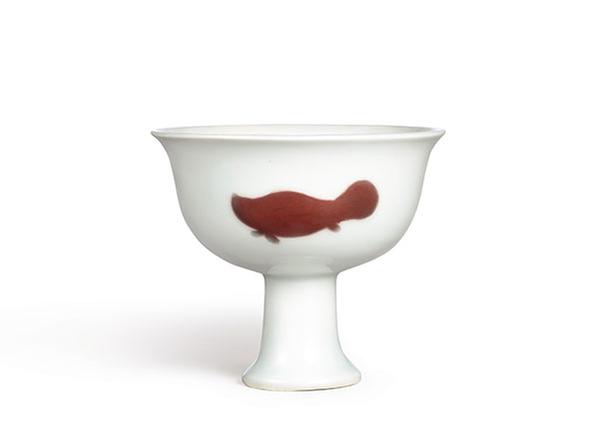Ming ceramics to be highlight of Hong Kong auction
By Lin Qi | China Daily | Updated: 2017-04-04 09:09
 |
| Sotheby's Hong Kong sales of Chinese porcelain on April 5 will auction a copper-red stem cup (right), both dated to the Xuande period. [Photo provided to China Daily] |
"Every dynasty has its highs and lows, and the highs of the Ming Dynasty were the first few decades, particularly the Yongle and Xuande reigns," Chow said, adding that although quite a few objects from the two periods are still extant, pieces that rank among the top list, such as the Xuande fish bowl, are exceptional and hard to come by.
The reign of the Emperor Chenghua (1464-87) also witnessed a peak of material refinement at the imperial kilns in Jingdezhen, China's age-old porcelain capital, in Jiangxi province.
Objects from the period will also go under the hammer at upcoming Hong Kong sales, including a doucai stem cup patterned with Chinese roses, and a blue-and-white cup decorated with flowering gardenias.
Doucai is a technique that combines under- and over-glazed patterns, each fired at different temperatures.
Compared with those from the Yongle and Xuande reigns, existing Chenghua pieces are "extremely scarce", because of stringent quality control at the kilns which resulted in limited output, Chow said.
It is small wonder that rarer pieces of Chenghua porcelain are avidly sought by today's collectors. In 2014, a Chenghua doucai cup painted with chickens in a garden was sold for HK$281 million ($36 million) to Shanghai billionaire Liu Yiqian.
Porcelain from the Qing Dynasty (1644-1911) has long been a market favorite, not only because of the great number of extant pieces, but also because their vibrant colors and patterns suit popular tastes.
However, as the price of Qing imperial ceramics has rocketed and few high-quality pieces are available on the market, collectors are turning to objects from the Ming Dynasty, which Chow said have been "grossly undervalued" and now "a positive market correction" is finally happening.
























